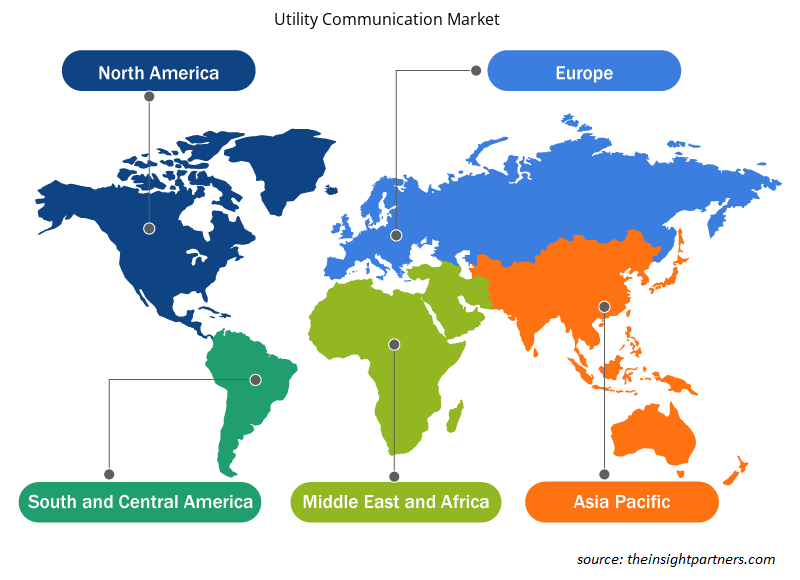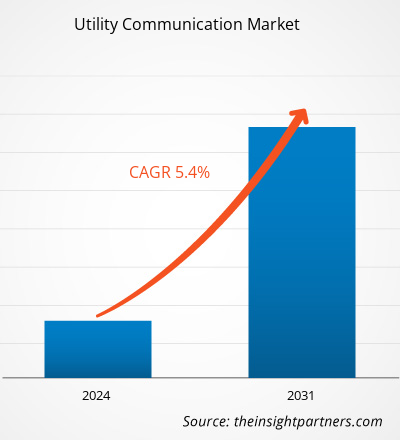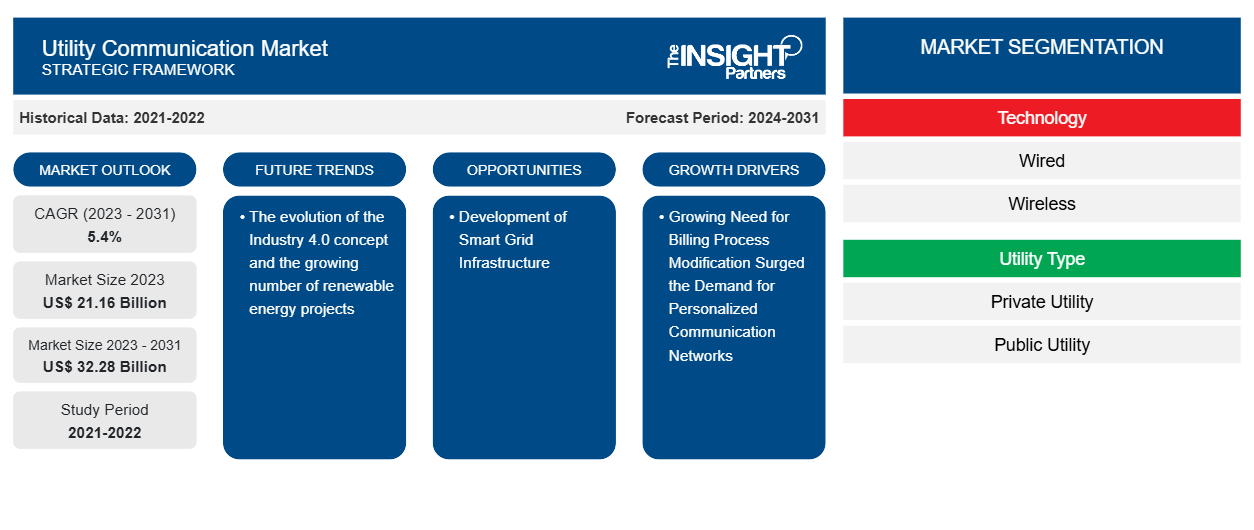公用事业通信市场规模预计将从 2023 年的 211.6 亿美元增至 2031 年的 322.8 亿美元。预计 2023-2031 年市场复合年增长率为 5.4%。工业 4.0 概念的发展和可再生能源项目数量的增加可能仍是公用事业通信市场的主要趋势。
公用事业通信市场分析
由于计费流程改进需求的不断增长,对个性化通信网络的需求激增,以及对分布式能源 (DER) 的需求不断增加,公用事业通信市场正在快速增长。在政府有利的举措和投资推动电力基础设施发展的推动下,市场正在稳步扩大。此外,智能电网基础设施的发展以及与物联网 (IoT) 和人工智能 (AI) 相结合的技术先进系统的日益普及为市场增长提供了有利可图的机会。
公用事业通信市场概览
公用事业通信是确保在广域网和局域网上更可靠、更安全、更安全地传输数据、视频和语音的系统。这种通信系统为用户提供了在危险场所轻松安装的好处。公用事业通信系统通过使用众多网络来工作,包括视频监控、智能电网、监控和数据采集 (SADA) 系统以及基于以太网的连接。此外,公用事业对有线和无线通信系统的需求不断增长,用于监控电力消耗和配电,在预测期内推动了市场的发展。
定制此报告以满足您的需求
您可以免费定制任何报告,包括本报告的部分内容、国家级分析、Excel 数据包,以及为初创企业和大学提供优惠和折扣
-
获取此报告的关键市场趋势。这个免费样品将包括数据分析,从市场趋势到估计和预测。
公用事业通信市场区域洞察
Insight Partners 的分析师已详细解释了预测期内影响公用事业通信市场的区域趋势和因素。本节还讨论了北美、欧洲、亚太地区、中东和非洲以及南美和中美洲的公用事业通信市场细分和地理位置。

- 获取公用事业通信市场的区域特定数据
公用事业通信市场报告范围
| 报告属性 | 细节 |
|---|---|
| 2023 年的市场规模 | 211.6亿美元 |
| 2031 年市场规模 | 322.8亿美元 |
| 全球复合年增长率(2023 - 2031) | 5.4% |
| 史料 | 2021-2022 |
| 预测期 | 2024-2031 |
| 涵盖的领域 |
按技术分类
|
| 覆盖地区和国家 |
北美
|
| 市场领导者和主要公司简介 |
|
市场参与者密度:了解其对商业动态的影响
公用事业通信市场正在快速增长,这得益于终端用户需求的不断增长,而这些需求又源于消费者偏好的不断变化、技术进步以及对产品优势的认识不断提高等因素。随着需求的增加,企业正在扩大其产品范围,进行创新以满足消费者的需求,并利用新兴趋势,从而进一步推动市场增长。
市场参与者密度是指在特定市场或行业内运营的企业或公司的分布情况。它表明在给定市场空间中,相对于其规模或总市场价值,有多少竞争对手(市场参与者)存在。
在公用事业通信市场运营的主要公司有:
- ABB有限公司
- 富士通有限公司
- 通用电气公司
- 霍尼韦尔国际公司
- OMICRON 电子有限公司
- 罗克韦尔自动化
免责声明:上面列出的公司没有按照任何特定顺序排列。

- 获取公用事业通信市场顶级关键参与者概览
- 历史分析(2 年)、基准年、预测(7 年)及复合年增长率
- PEST和SWOT分析
- 市场规模、价值/数量 - 全球、区域、国家
- 行业和竞争格局
- Excel 数据集
近期报告
客户评价
购买理由
- 明智的决策
- 了解市场动态
- 竞争分析
- 客户洞察
- 市场预测
- 风险规避
- 战略规划
- 投资论证
- 识别新兴市场
- 优化营销策略
- 提升运营效率
- 顺应监管趋势























 获取免费样品 - 公用事业通信市场
获取免费样品 - 公用事业通信市场